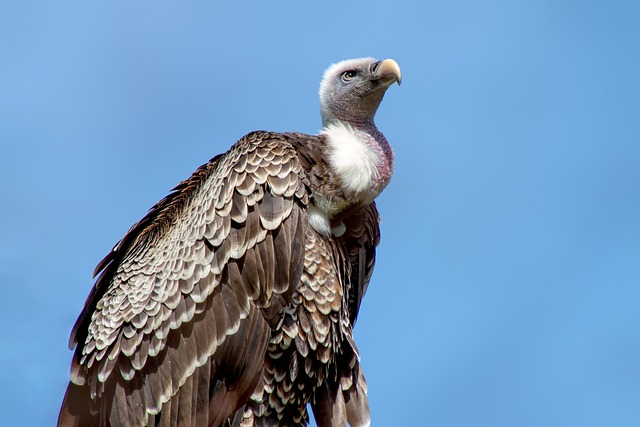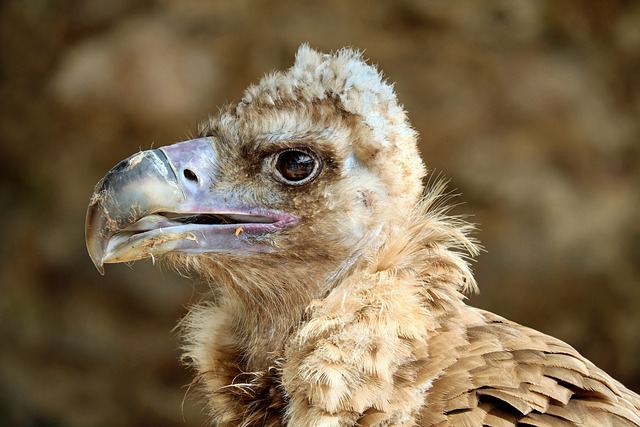.Physical Characteristics:
Vultures are a large bird of prey known for their bald heads and necks, which are typically featherless. This adaptation enables them to keep clean whilst eating carrion. And while their heads are often deep with wrinkles and bright pink to red depending on the species,
They are large birds with wide wings, which are suited to soaring, and their wingspan is 5.5 to over 10 feet (1.7 to 3 meters), depending on the species. They have sturdy bodies, adorned in dark brown, black, or grayish feathers while a few species, such as the King Vulture, have noxious white feathers tinged with black at the tips of their wings.

Their slender, scything beaks are specialized for ripping flesh, and their powerful talons are more adapted for walking than holding onto prey. Unlike hawks or eagles, vultures’ feet are not well adapted to killing but to steady walking.
Behavior and Diet:
Vultures are scavengers that primarily feed on the carcasses of any dead animal. Their excellent olfactory capacity, especially in species such as the Turkey Vulture, and excellent eyesight help them to find carrion from large distances. They play a critical ecological role by cleaning up decomposing matter, thus preventing the spread of disease.
Vultures are known to soar for hours on thermal updrafts, conserving energy while scanning for food. They rarely hunt live prey and depend on other predators to kill or on natural deaths for their meals.
Habitat:
Vultures are found on every continent except Antarctica and Australia. They inhabit a variety of environments, including deserts, savannas, grasslands, mountains, and even urban areas.
Types of Vultures:
There are two primary groups of vultures:

- New World Vultures: Found in the Americas, this group includes species like the Turkey Vulture, Black Vulture, and the magnificent Andean Condor. These birds often rely on their sense of smell to find food.

- Old World Vultures: Found in Africa, Europe, and Asia, this group includes species like the Griffon Vulture, Egyptian Vulture, and Himalayan Vulture. These birds rely more on their sharp vision than smell to locate food.
Reproduction and Lifespan:
Vultures typically nest on cliffs, trees, or even directly on the ground. They lay one or two eggs, which are incubated for 30–60 days. Both parents share responsibilities in feeding and caring for their chicks. Vultures can live 10–50 years in the wild, depending on the species, with larger species like the condor living the longest.
Conservation Status:
Many vulture species are threatened or endangered due to habitat destruction, poisoning (often unintended from livestock carcasses treated with veterinary drugs like diclofenac), and declining food availability. Conservation efforts focus on habitat protection, banning harmful drugs, and educating communities about the ecological importance of vultures.
Fun Fact:
Vultures possess an efficient digestive system capable of neutralizing harmful pathogens found in decaying flesh, making them immune to diseases like botulism and anthrax. This unique adaptation further underscores their vital role in maintaining ecological balance.

